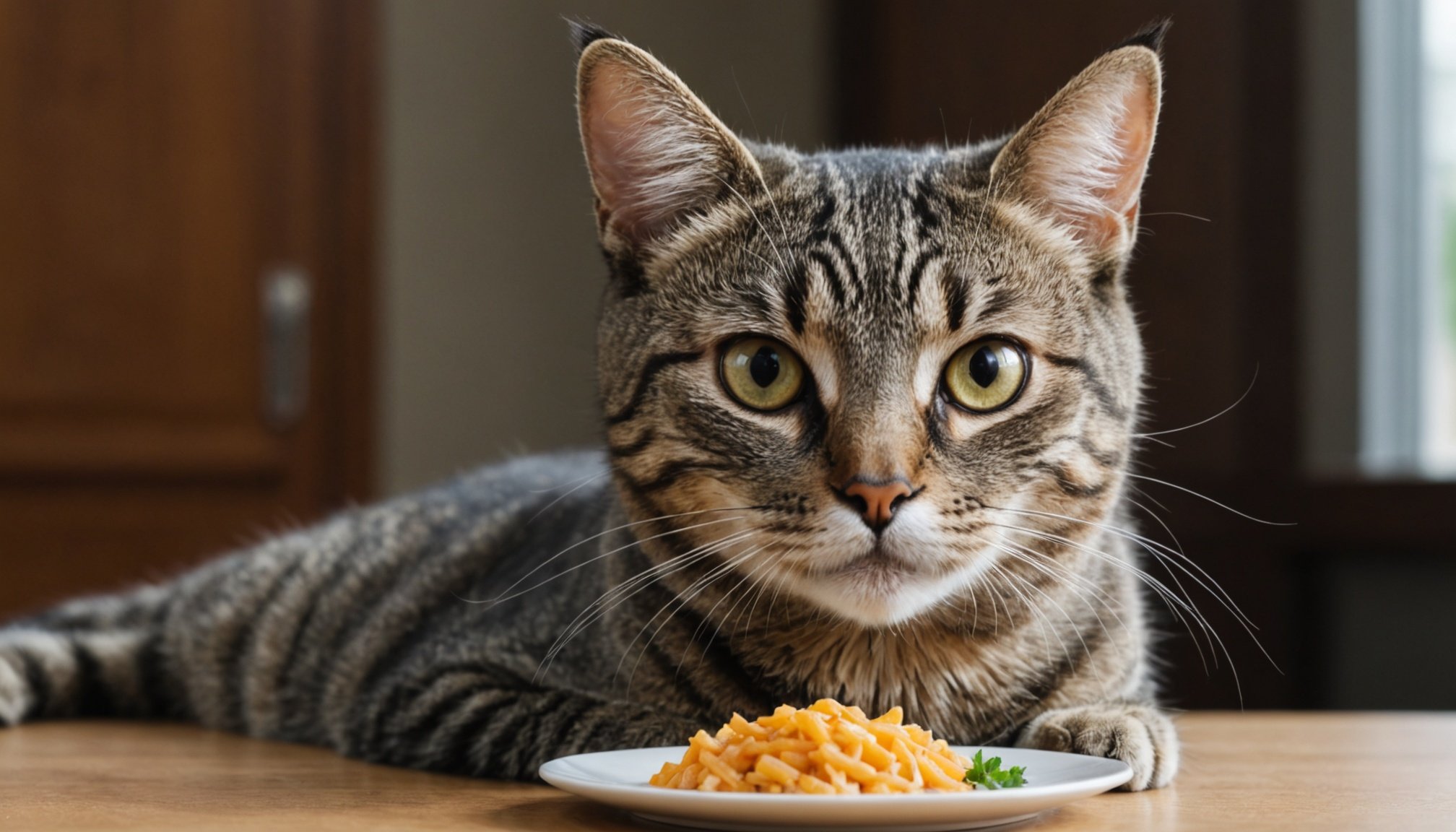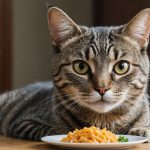Overview of Pancreatitis in Cats
Pancreatitis in cats is a significant health issue marked by inflammation of the pancreas, an organ pivotal in digestive enzyme production. The condition can lead to severe disruptions in a cat’s digestive process and overall well-being. Understanding the symptoms of feline pancreatitis and its causes is crucial for early detection and treatment.
Common symptoms of feline pancreatitis include lethargy, decreased appetite, vomiting, and abdominal pain. These symptoms can be subtle, making it challenging to diagnose without veterinary assistance. Cats may also present with jaundiced skin or rapid weight loss, often mistaken for other illnesses.
Avez-vous vu cela : Essential Guide: Safely Introducing Your Cat to a Newborn Baby at Home
The causes of pancreatitis are varied and may include trauma, infection, or risk factors such as obesity and dietary indiscretion. Exposure to toxins or certain medications can also trigger this condition. Notably, no specific breed predisposition exists, but stress and concurrent diseases can exacerbate the risk.
It’s essential to seek veterinary care promptly if any such symptoms persist, enabling a proper diagnosis through blood tests or ultrasound. Early intervention is key to managing pancreatitis, minimizing complications, and ensuring a positive outcome for affected felines.
Dans le meme genre : Creating Tranquil Spaces: How to Support Your Cat”s Need for Solitude in a Bustling Home
Essential Dietary Guidelines
Understanding the nutritional needs for cats with pancreatitis is crucial for their recovery. Cats require a specific balance of macronutrients, particularly proteins, fats, and carbohydrates.
Nutritional Requirements
A pancreatitis diet for cats must ensure they’re getting adequate protein. This is vital for maintaining muscle mass and supporting tissue repair. However, high fat content can exacerbate symptoms, so it’s generally recommended to opt for a lower fat diet.
Balanced Macronutrients
- Proteins: Lean sources are preferred. Aim for proteins with high digestibility.
- Fats: Although a necessary nutrient, limiting fat intake is essential. Choose healthy fats cautiously.
- Carbohydrates: These should be digestible and present in moderate quantity to avoid stressing the pancreas.
Vitamins and Minerals
Vitamins and minerals play a supportive role in dietary management for cats with pancreatitis. They contribute to overall health and aid in healing. Key vitamins such as A, E, and the B-complex, along with minerals like zinc and selenium, are particularly beneficial. Consult your vet regarding supplementation, as improper dosages can cause additional health issues.
Implementing these guidelines helps manage pancreatitis symptoms while promoting recovery and ensuring your cat receives balanced nutrition.
Types of Suitable Food
Choosing the appropriate cat food for pancreatitis is crucial for managing your pet’s health. Diet plays a significant role in alleviating symptoms and promoting recovery.
Commercial Diet Options
Low-fat cat food is a common choice when shopping for commercial options. Brands offering dedicated formulas designed to minimise flare-ups are often the best bet. These products usually contain higher levels of easily digestible proteins and reduced fat content, supporting the needs of a cat with pancreatitis. Check for veterinary-endorsed labels to ensure credibility.
Home-Cooked Diets
When considering home-cooked meals, it’s vital to focus on crafting recipes that align with veterinary dietary guidelines. There’s a need to balance low-fat ingredients while providing sufficient proteins and essential nutrients. Consulting a vet or pet nutritionist can help in customising these diets to meet your cat’s specific needs, ensuring they receive a holistic and balanced meal plan.
Prescription Diets
Veterinary diets specifically formulated for pancreatitis often require a prescription. These diets are tailored to provide the right balance of nutrients while focusing on low fat content. They aim to alleviate digestive stress and support recovery. Remember, these diets should be administered under professional supervision to ensure they meet the health requirements of your pet.
Step-by-Step Transition Plan
When considering a diet transition for cats, it’s essential to adopt a gradual approach to avoid gastrointestinal upset. Cats are creatures of habit, and any abrupt changes in their feeding routine can lead to digestive issues. Therefore, properly planned cat food transitions are crucial.
Start by introducing the new food in small quantities alongside their current diet. A practical strategy is to mix 75% of the old food with 25% of the new food in the first week. Gradually, increase the proportion of the new food over a two-week period: 50% old and 50% new in the second week, followed by 25% old and 75% new in the third week, until finally transitioning entirely to the new diet in the fourth week.
Ensure you maintain the correct portion control throughout this process. Cats thrive on a routine, so keep feeding times consistent. Watch how they respond to the change and make necessary adjustments if any adverse reactions occur.
Utilising effective feeding strategies can also help. If your cat seems resistant, consider adding a small amount of warm water to enhance the aroma, making it more appetising. These methods will help ensure a successful transition, promoting better nutrition and overall health.
Tips for Monitoring Your Cat’s Health
Understanding your cat’s health begins with monitoring cat health through observation and regular vet consultations. When you notice changes in their diet, keep a close eye on their behavior. Cats can be sensitive to dietary changes, and shifts might indicate underlying health issues. Important signs to watch include changes in eating habits, increased thirst, or alterations in their usual activity levels.
Regular vet consultations are vital. Scheduling routine check-ups ensures that a professional can assess your cat’s overall health and detect any potential problems early. During these visits, vets can provide valuable advice on dietary needs, vaccination schedules, and other essential care.
Observing your cat is crucial, as you can track changes in their weight, behavior, and digestion. Weight fluctuations may signal nutritional imbalances or metabolic issues. Similarly, any noticeable behavioral changes, such as increased aggression or lethargy, should be addressed promptly.
To provide comprehensive care, consider creating a health log for your cat. Document eating habits, weight changes, and any unusual behaviors. By tracking these changes, you can supply your vet with detailed information, ensuring a more accurate diagnosis and treatment plan. Regular observation and prompt action are the keys to maintaining your feline friend’s health.
Recipes and Food Brand Recommendations
Feeding a cat with pancreatitis requires special attention to their diet to ensure their health and happiness. Simple homemade recipes can be an excellent option for providing a nutritious meal tailored to your cat’s needs. Recipes for cats with pancreatitis should typically focus on reducing fat content while offering high-quality protein. A simple recipe might include boiled chicken, rice, and a small amount of pumpkin for fiber. These ingredients are easy to digest and gentle on the pancreas.
Simple Homemade Recipes
Creating a balanced meal from scratch can be rewarding and beneficial for your furry friend. Consider using ingredients like:
- Lean proteins such as chicken or turkey.
- Well-cooked grains like rice.
- Vegetables like carrots in small portions.
Recommended Brands
When choosing the best cat food brands, look for those specifically formulated for cats with pancreatitis. Brands like Hill’s Prescription Diet and Royal Canin offer specially designed formulas that can aid in managing symptoms. These products often feature reduced fat and easy-to-digest ingredients.
Tips for Feeding
Introduce new recipes or brand foods slowly into your cat’s diet to ensure acceptance. Increasing hydration by adding water to meals can also enhance digestion. Pay attention to any changes in your cat’s behaviour or appetite, and consult your vet if in doubt.













